 Kranti Gatha Gallery inside the underground British-era bunker at Raj Bhavan, Mumbai is a tribute to known and unknown revolutionaries of the Indian freedom movement. It was inaugurated by PM Narendra Modi in June 2022
Kranti Gatha Gallery inside the underground British-era bunker at Raj Bhavan, Mumbai is a tribute to known and unknown revolutionaries of the Indian freedom movement. It was inaugurated by PM Narendra Modi in June 2022
Mumbai may be India’s financial capital today but the city had been at the centre of India’s fight for freedom for decades and played a very important role in the growth of the political consciousness of the nation. Each city or region played a unique role in terms of its contribution to the freedom struggle. These included Delhi, Bengal, Punjab, Bihar, Uttar Pradesh, Gujarat, etc. The port city of Mumbai, however, that headquartered the administrative subdivision of the Bombay Presidency at the time, in time became equally involved in the freedom struggle against the British rule. And, structures and zones that were once hosting freedom fighters, revolutionaries and luminaries building the nation, today, pepper the landscape of the financial capital of India. Mumbai is the city where the Indian National Congress came to be and it was in Mumbai that some of the most powerful mass movements against the British were launched including the Non-Cooperation Movement and the Quit India Movement.
The iconic Gateway of India
If there’s one structure that has always been synonymous with Mumbai, it’s the Gateway of India located in the city’s historic Colaba precinct. A trip to Mumbai is incomplete without visiting the Gateway of India. Other than the exquisite architecture and an imposing presence that leave visitors awestruck and with a memory of a lifetime, the Gateway of India played a significant role in India’s freedom fight as well. Everyone knows that the Gateway of India was constructed to commemorate the landing of British King George V and Queen Mary at Apollo Bunder. However, what most people don’t know is that Gateway of India is also the place from where the last of the British troops left. The date was 28 February 1948 and the day marked the end of the 200-years-long British rule in India. The-then Governor of Bombay Sir George Sydenham Clarke had laid the foundation of this structure on 31 March 1911 after getting the final design from George Wittet and the construction was completed in 1924.On the morning of 28 February 1948, thousands had gathered for the farewell ceremony. The units of the newly-formed Indian Army including the Maratha Light Infantry, Sikh Regiment, and the 3/5th Gurkhas provided guards of honour to the 1st Somerset Light Infantry – the last British serving battalion. The first Governor of Bombay of independent India Raja Maharaj Singh read out farewell messages. After the ceremony, the troops along with the General Officer Commanding in charge of the withdrawal of troops Major-General Lashmer Whistler marched out through the Gateway of India and embarked on the ‘Empress of Australia’ for their voyage back home. Home to many thinkers Behind every movement is an army of intellectuals who guide the masses to
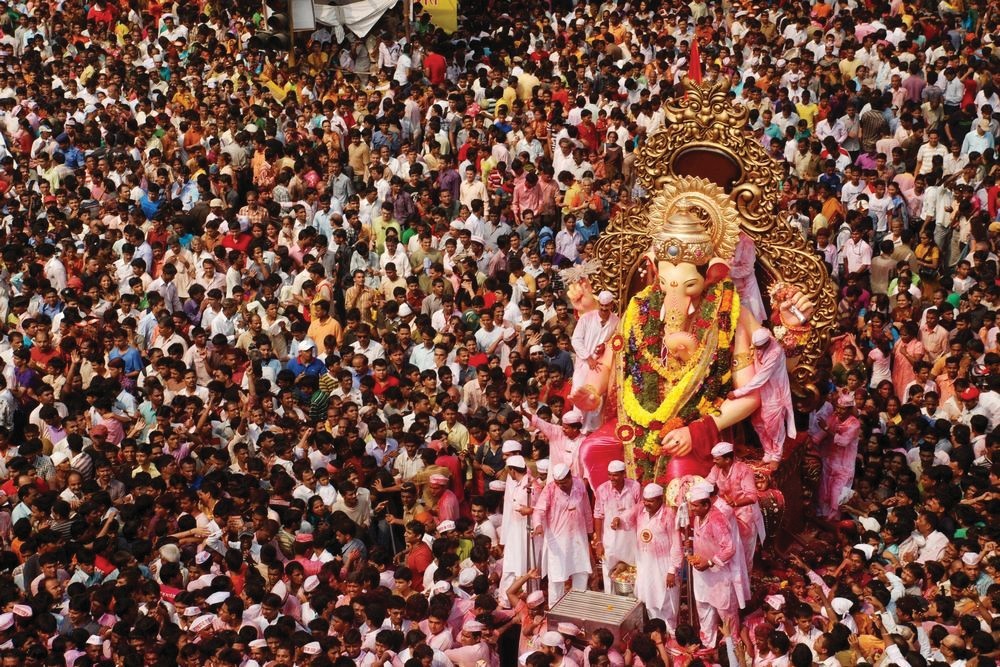 Saravajanik Ganesh utsav was started by Lokmanya Tilak in Mumbai
Saravajanik Ganesh utsav was started by Lokmanya Tilak in Mumbai
ensure the movement reaches its logical conclusion. In Mumbai, the awareness started in 1885 with the formation of the Bombay Presidency Association by Dadabhoy Nauroji. Also known as the ‘Grand Old Man of Indian Nationalism’, Nauroji is regarded as one of the most important Indians during the birth of the nascent independence movement in the country. He maintained that foreign rule was not favourable for India and that independence is what Indians should strive for.Mahatma Gandhi and other freedom fighters such as Bal Gangadhar Tilak looked up to him. A statue of his is located opposite Flora Fountain at Hutatma Chowk in South Mumbai. The intensification of the Swadeshi movement, which started in Calcutta in 1905, had a huge impact on Bombay. Here, it was Lokmanya Tilak who spearheaded the Swadeshi movement. A nationalist and a teacher and one of the strongest advocates of Swaraj, he left his M.A. course midway to study law and obtained his LL.B degree from Government Law College in 1879. It was Bal Gangadhar Tilak who, in 1894, transformed the private, household worshipping of Lord Ganesha into a grand public event called the Sarvajanik
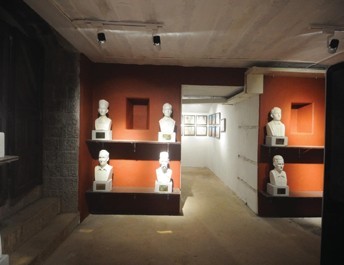 Statues of revolutionaries inside the Bunker Museum
Statues of revolutionaries inside the Bunker Museum
Ganeshotsav. Inspired by freedom fighter Shrimant Bhausaheb Rangari who installed the first ‘sarvajanik’ Ganesha idol in his home located in Shalukar Bol in Pune, Tilak went ahead to install a Ganesha idol in news publication Kesari’s office in 1894 as a symbol of national pride and unity. He popularised Ganesh Chaturthi as a national festival bridging gaps of caste, community, etc. Today, Ganesh Visarjan at Girgaon Chowpatty is symbolic of the unity and fervour of Ganeshutsav in Mumbai and across India. Chowpatty has another strong connection with the freedom movement. A mass demonstration was held at Girgaon Chowpatty after the passing of the infamous Rowlatt Act of 1919. Here, men, women even children gathered at the beach donning black clothes to observe a ‘Black Sunday’. A statue of Bal Gangadhar Tilak stands tall at Chowpatty today, at the exact spot where he was cremated. He died on 1 August 1920, the same day when Mahatma Gandhi launched the Non-Cooperation Movement.
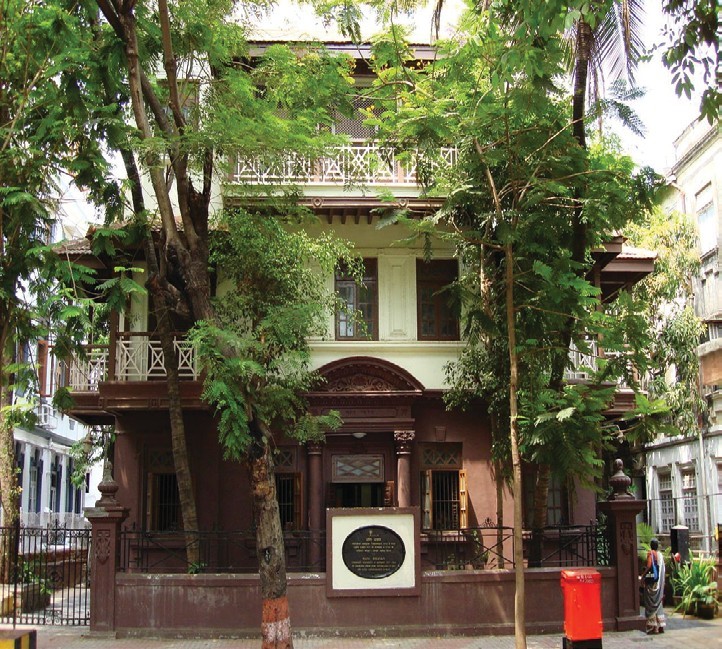 Gandhi lived at Mani Bhavan from 1917 to 1934. It was from here that the Non- Cooperation Movement was launched
Gandhi lived at Mani Bhavan from 1917 to 1934. It was from here that the Non- Cooperation Movement was launched
Gandhi and Mumbai
One of the most important political events in India’s independence movement, the foundation of the Indian National Congress was laid on 28 December 1885 at Gokuldas Tejpal Sanskrit Pathshala, near Gowalia Tank in Bombay in the presence of 72 delegates. Then, A O Hume assumed office as the General Secretary and Womesh Chunder Bonnerjee of Calcutta was elected the President.Besides Hume, two additional British members (both Scottish civil servants) were members of the founding group named William Wedderburn and Sir John Jardine. Other members of the Congress were from the Bombay and Madras Presidencies and included Dadabhai Naoroji, Justice Ranade, Pherozeshah Mehta and Dinshaw Wacha. The first session of the Indian National Congress was held from 28 December to 30 December in the same school. The other important event in Bombay was in early 1915 when Mahatma Gandhi left South Africa for good and chose to stay in Bombay. In Bombay, Gandhi lived at Mani Bhavan from 1917 to 1934.The two-storeyed building, located on Laburnum Road in Gamdevi, also played an important role in the freedom struggle. Gandhi launched the Non-cooperation Movement from Mani Bhawan in 1920. It’s where in 1921 he did a four-day fast to restore peace in Mumbai. Here, Gandhi started his association with ‘charkha’ or the spinning wheel. Mani Bhavan is also the origin of various other movements such as Satyagraha, Swadeshi Movement, Khadi and Khilafat Movement. Meetings to launch Civil Disobedience movement were held here. After launching the Civil Disobedience Movement, Gandhi was arrested from the very gates of Mani Bhavan. Today, the house is a museum representing Gandhi’s life through his letters,
 A memorial was constructed in 1970 at the August Kranti Maidan, Tardeo to commemorate the park`s significance in the freedom struggle
A memorial was constructed in 1970 at the August Kranti Maidan, Tardeo to commemorate the park`s significance in the freedom struggle
pictures, portraits even the cloth which he learned to spin here. It also houses a Research Institute of Gandhian thought and Rural Development for post graduate students. The historic maidans of Mumbai India’s freedom struggle was marked by mass protests that would see participation of thousands of countrymen who were willing to sacrifice their lives for a free India. Gowalia Tank Maidan aka the August Kranti Maidan located at Tardeo in Central Mumbai is where Mahatma Gandhi gave the Quit India speech on 8 August 1942 decreeing that the British must leave India immediately or else mass agitations would follow. With Maulana Abul Kalam Azad as President, the All India Congress Committee organised its Bombay session, which continued past-midnight into the next day. The venue was the Gowalia Tank Maidan, which was located 250 metres away from Gokuldas Tejpal House where the INC was founded in 1885. On 8 August 1942, the call for ‘Quit India Movement’ was given along with Gandhi’s ‘Do or Die’ call. Here, Aruna Asaf Ali, popularly known as the ‘Grand Old Lady’ of the Independence movement, hoisted the Indian flag, the Tricolour, for the first time during the call for Quit India Movement. The slogan ‘Quit India’ was coined by socialist and trade unionist Yusuf Meherally who also served as the Mayor of Mumbai.Within a few hours of the resolution and the call, all national leaders were arrested who were released only after three years, after the World War II ended. In 1970, a memorial
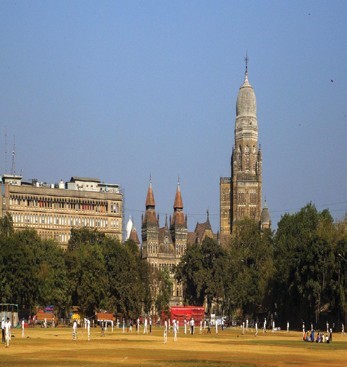 Azad maidan – one of the historic maidans of Mumbai
Azad maidan – one of the historic maidans of Mumbai
was erected in August Kranti Maidan to commemorate the park’s significance in India’s freedom struggle.
 It is said that Jamshetji Tata was inspired to build the Taj Hotel in Mumbai after he was refused entry at one of the grandest hotels of British time, Watson`s Hotel
It is said that Jamshetji Tata was inspired to build the Taj Hotel in Mumbai after he was refused entry at one of the grandest hotels of British time, Watson`s Hotel
History-rich zone
At the corner of Nana Chowk, in a compound near August Kranti Maidan, is the old Congress House. Today, largely residential and unfortunately in a dilapidated condition, the Congress House compound was where ordinary Indians once gathered to raise their issue and grievances against the British rule. During the freedom struggle, several protests and demonstrations were launched from Congress House including a series of salt marches against the British economic policies. Jinnah People’s Memorial Hall, located close to the Congress House, was built in 1919 as a tribute to Jinnah. As a lawyer, Jinnah crossed paths with Lokmanya Tilak and together they founded the All India Home Rule League in 1916. At the time, on 10 June 1919, Lord Willingdon held a war conference in Mumbai’s Town Hall (now The Asiatic Society of Mumbai) to enlist Indian support for the war for which both Tilak and Jinnah were invited. At the conference, Tilak demanded that the British agree to the demands of the Home Rule League to which the Governor refused.
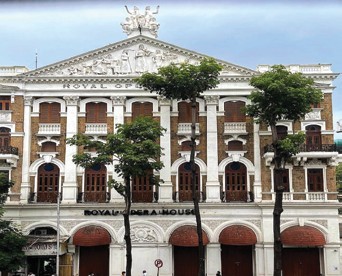 The Royal Opera House (then Opera House) at Charni Road
The Royal Opera House (then Opera House) at Charni Road
was one of the public spaces used for demonstrations
against the British rule
The Asiatic Town Hall
The exquisite Asiatic Town Hall is one of the most popular landmarks of Mumbai. It also holds a lot of historical value particularly from the times of India’s freedom struggle. The Asiatic Library and Town Hall, characterised by iron pillars, a triangular roof on the facade, white paint and a false ceiling in the main
foyer, was completed in 1833. The Town Hall was the cultural centre of Bombay with it being used often for official announcements, live performances for the British officers, etc. After the Indian Rebellion of 1857, the Queen’s proclamation was announced on the steps of the Asiatic Library.
 The Asiatic Town Hall holds a lot of historical value as it was used often for making official announcements
The Asiatic Town Hall holds a lot of historical value as it was used often for making official announcements
The then governor of Bombay, Lord Elphinstone, announced that the administration and control of the Bombay Presidency was being passed from the East India Company to The Crown, from the steps leading to the Town Hall. This was done because the 1857 revolt was considered a failure of the Company and The Crown stepped in to maintain law and order in the region. A statue of Elphinstone overlooks the reading hall there.
 Liberty Cinema
Liberty Cinema
The Bombay Harbour
 A memorial was erected at Cooperage in Colaba to commemorate the 1946 Naval Uprising against the British Raj
A memorial was erected at Cooperage in Colaba to commemorate the 1946 Naval Uprising against the British Raj
The Bombay Harbour marked the first and the most prominent revolt by Indian sailors against the British Rule. The Royal Indian Navy Mutiny of 18 February 1946 took place here. The men posted at HMS Talwar announced a strike to oppose the Raj and, the next day, they took control of the naval trucks and started patrolling the city where they invited the masses to join. Eventually, Union Jacks were torn down and the rebels hoisted red flags. Also called the 1946 Naval Uprising, it was a rebellion by the Indian naval ratings, soldiers, police personnel and civilians against the British Raj. From Bombay, the revolt swiftly spread throughout British India and finally involved over 20,000 sailors in 78 ships and shore establishments across Calcutta, Karachi, Madras, Cochin and Vishakhapatnam. The uprising is considered as one of the key events of India’s freedom struggle. On February 22-23, over 250 sailors were killed and others were forced to surrender who were later executed.
 Naval Uprising Memorial
Naval Uprising Memorial
The uprising, however, did jolt the very foundation of the British government in India and did lead to the British Prime Minister announcing that they would leave India before June 1948. To commemorate the 1946 Naval Uprising, a memorial was erected at Cooperage in Colaba in Mumbai by the Western Naval Command of the Indian Navy on 4 December 2001. Other historic structures Ajit Villa located at a walkable distance from Raghavji Road is also a significant landmark. During the Quit India Movement, the British initiated a massive crackdown on anyone who deemed a freedom fighter. So the Indian National Congress members devised a way to protect themselves in a manner they could also stay in touch with each other and with the events of the struggle. They formed the Underground Congress Radio. This was an illegal movement where members of the party would carry portable radio equipment and operate from multiple buildings, and not one. This was done to hoodwink the British officials so as not to get caught even as they carried their revolutionary activities.
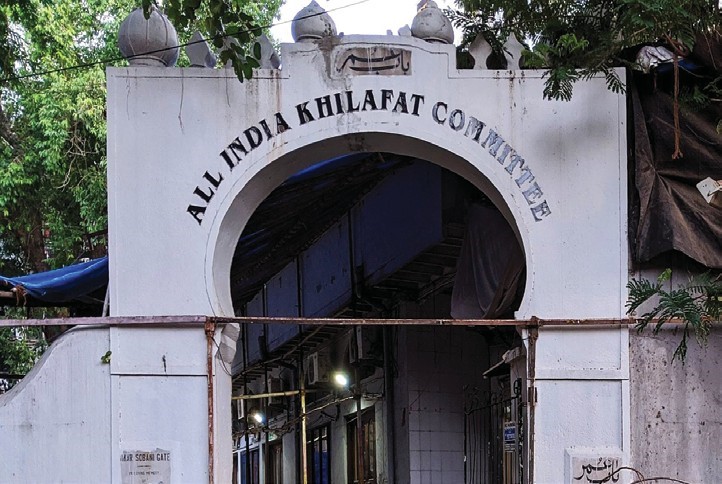 Khilafat House at Byculla
Khilafat House at Byculla
One such building where the members of the INC operated from was the Ajit Villa. Close to Ajit Villa is one of the oldest theatres in the city, the Imperial Cinema. It’s here that Jinnah met Gandhi for the first time when the latter returned from South Africa and presented a welcome speech for Gandhi. Liberty Cinema located in South Mumbai is an Art Deco 1,200-seater single screen movie theatre built in 1947. As it was built in the year of India’s Independence, its founder Habib Hoosein decided to name it ‘Liberty’. During the freedom struggle, Gandhi understood that the strength of the national movement was dependent on inclusivity. So, he decided to embrace the Khilafat Committee that was started by Shaukat Ali and Mohammad Ali Jauhar, known as the Ali brothers. The Khilafat Committee was created to defend Islam’s holy sites of Mecca and Medina following the collapse of the Ottoman Empire. The home of the Khilafat Committee is Khilafat House located in Byculla. Gandhi made the Khilafat Committee one of the main planks of the Non-Cooperation Movement. It became a movement that showcased Hindu-Muslim unity.
Manu Shrivastava


